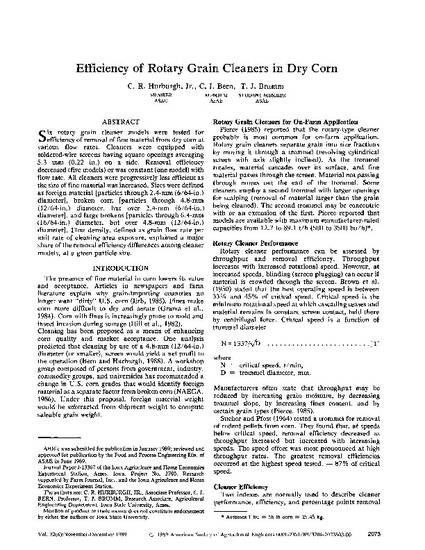
Six rotary grain cleaner models were tested for efficiency of removal of fine material from dry corn at various flow rates. Cleaners were equipped with soldered-wire screens having square openings averaging 5.3 mm (0.22 in.) on a side. Removal efficiency decreased (five models) or was constant (one model) with flow rate. All cleaners were progressively less efficient as the size offine material was increased. Sizes were defined as foreign material [particles through 2.4-mm (6/64-in.) diameter], broken corn [particles through 4.8-mm (12/64-in.) diameter, but over 2.4-mm (6/64-in.) diameter], and large brokens [particles through 6.4-mm (16/64-in.) diameter, but over 4.8-mm (12/64-in.) diameter]. Flow density, defined as grain flow rate per unit rate of cleaning area exposure, explained a major share of the removal efficiency differences among cleaner models, at a given particle size.
Available at: http://works.bepress.com/thomas_brumm/11/

This article is from Transactions of the ASAE, 32, no. 6 (November-December 1989): 2073–2077.